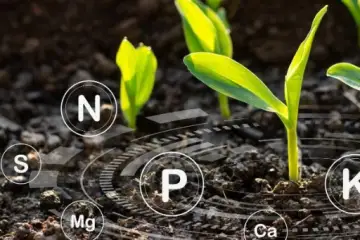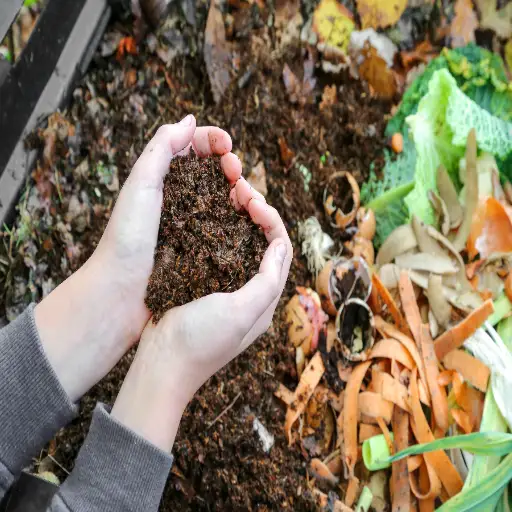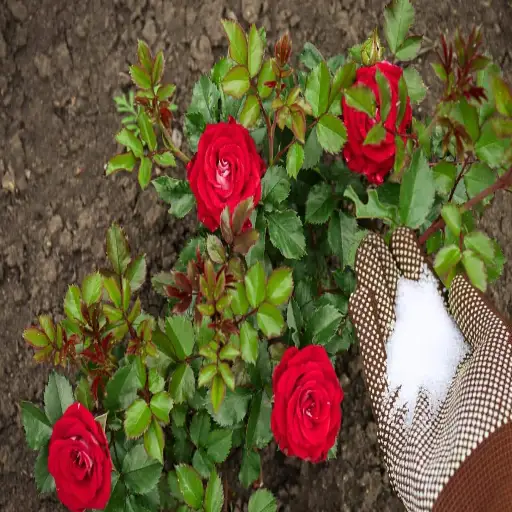Growing cannabis plants successfully requires careful attention to their nutritional needs, and one often-overlooked solution lies in the use of Epsom salt. Renowned for its high magnesium and sulfur content, Epsom salt has gained popularity among cultivators as a natural and effective way to enhance plant health, boost yields, and correct critical nutrient deficiencies. But what makes Epsom salt such a reliable tool in cannabis cultivation? This article will guide you through the scientifically backed benefits of Epsom salt and provide detailed techniques for incorporating it into your care routine. Whether you’re a novice grower or an experienced cultivator, understanding how to use Epsom salt effectively can elevate your cannabis-growing process and ensure stronger, healthier plants.
Benefits of Epsom Salt for Cannabis Growth

Improving Nutrient Absorption
Epsom salt, a chemical compound of magnesium sulfate, assists in increasing the uptake of nutrients by cannabis plants. Of great importance in photosynthesis, magnesium is a constituent of chlorophyll and thus essential for the process by which plants capture sunlight for energy. Cannabis plants with low magnesium content suffer from reduced growth and limited distribution of nutrients, which adversely affects crop yields and crop health.
Epsom salts work best in imparting beneficial effects when they retrieved a shortage of sulfur or magnesium in the soil or the growing medium. Such a shortage reduces the plant’s ability to absorb and utilize other important nutrients such as nitrogen, phosphorus, and potassium. By supplementing Epsom salts, growers restore the proper balance of nutrients and allow the plant to metabolize efficiently, leading to good growth and flower production.
Being highly soluble, Epsom salt can be administered through irrigation or foliar sprays, quickly correcting any deficiency symptoms. Having this ease of use makes Epsom salt an alternative worth considering for maintaining healthy cannabis plants, especially in magnesium-deficient conditions or in intensive cultivation setups like hydroponics and coco coir.
Boosting Chlorophyll Production
Chlorophyll production is directly influenced by the presence of certain essential nutrients like magnesium and nitrogen. Magnesium present in Epsom salt (magnesium sulfate) is a very crucial constituent of the chlorophyll molecule. It is vital to photosynthesis, where it helps the plant to grab light energy and convert it to chemical energy. Deficiency of magnesium is highly detrimental to chlorophyll synthesis, showing symptoms like yellowing of leaf and retardation in growth.
Taking Epsom salts as one method to increase chlorophyll in plants can be of great importance in high-intensity cultivation systems. Since Epsom salts are highly soluble in nature, the magnesium is immediately absorbed either through soil amendments or foliar spray so that the plants receive the necessary nutrients without any delay. For foliar application, dissolve Epsom salts in water at 1 1-tablespoon-per-gallon per gallon concentration and apply immediately. This also circumvents any restrictions on nutrient uptake through the soil and directly deposits magnesium in the leaves, where chlorophyll synthesis occurs.
Also, it is very important that light levels and nutrient availability be kept in optimized conditions for the highest production of chlorophyll. When Epsom salt is paired with an integrated strategy for nutrient management, it will help ensure the long-term health and productivity of plants. These practices, when properly done, provide green foliage of strength and great efficiency in photosynthesis, which directly affects growth and yield outcomes.
Preventing Magnesium Deficiency in Cannabis Plants
Magnesium deficiency in cannabis plants can be avoided by maintaining excellent growing conditions and supplying sufficient nutrients. Magnesium is an essential macronutrient for chlorophyll production and photosynthesis. Start with the pH of the soil or growing medium; magnesium absorption by cannabis is best between 6.0 and 7.0 in soil, and between 5.5 and 6.5 in hydroponic systems. Regular testing and adjustment ensure that magnesium and other nutrients remain available to the plant.
Also, giving supplements rich in magnesium, such as Epsom salt (magnesium sulfate) or cal-mag (calcium-magnesium) products, should be included in the feeding regime. For Epsom salt, dissolve 1 teaspoon in a gallon of water and periodically use it as a foliar spray or soil drench. Since these supplements supply magnesium in a readily available form, they prevent the onset of deficiencies, which, if detected, could now benefit the plants in a critical growth phase.
Als,o focus on the overall nutrient balance of your fertilization strategies by using the best quality cannabis-specific fertilizer containing an appropriate amount of both macro- and micronutrients. By keeping a close eye on feeding and making adjustments when necessary, you can prevent imbalances that might lead to magnesium-related problems. Supporting healthy cultivation through watering, lighting, and environmental controls further protects the plant against magnesium deficiency and helps maximize its growth and yield potential.
How Epsom Salt Enhances Plant Health
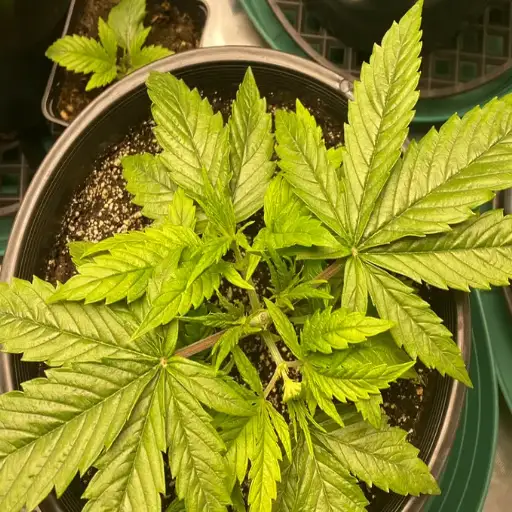
Aiding Stronger Root Systems
Epsom salts refer to magnesium sulfate (MgSO₄), whose presence is indispensable for the development of strong root systems in plants. Magnesium is a part of chlorophyll and thus has a direct bearing on the ability of a plant to photosynthesize process that generates energy required for root elongation and nutrient absorption. Sulfate is instrumental in amino acid and protein synthesis, which are the biochemicals ensuring that the roots have all they need to proliferate successfully. Together, these elements of magnesium and sulfate work mutually to strengthen the root system while enhancing the plant’s capacity to procure water and nutrients from the soil.
Magnesium sulfate can be beneficial in areas where soils generally have low but depleted magnesium levels, following intensive cultivation. Through proper soil management using Epsom salts, cultivators alleviate such deficiencies and promote the rooting of plants into deep and widely spreading root systems. However, it’s believed that plants with healthier roots better withstand environmental stress, like drought and poor soil conditions, which puts magnesium sulfate in a prime position as an effective amendment toward sustainable agriculture.
Moreover, field research has demonstrated measurable enhancements in root biomass and nutrient uptake following applications of Epsom salts within a precision farming framework. This evidences clear agronomic benefits arising from an optimized magnesium sulfate fertilizer strategy. Whether applied as a granular basal treatment to the soil or as a dilute foliar spray, magnesium sulfate consistently proves its worth in fortifying the root system, indispensable for securing high yields compatible with high crop quality.
Increasing Yields
For achieving maximum yields, it is essential to understand the various nutrient dynamics in plants and to strategically institute input management systems. Magnesium sulfate, being a vital source of magnesium and sulfur, contributes to improving chlorophyll synthesis and facilitating enzymatic processes required for growth. A study has revealed that crops exhibiting magnesium deficiencies are stunted in growth, exhibit interveinal chlorosis, reduced efficiency in photosynthesis, and hence are low in yield.
Advanced soil testing techniques, along with remote sensing approaches, empower farmers to accurately identify nutrient imbalances and rectify them with site-specific applications of magnesium sulfate. Targeted applications of magnesium sulfate, depending on soil fertility and at critical crop growth stages, have been demonstrated to increase yields in the range of 15-20% for maize, soybean, and wheat. These applications help in increasing seed or fruit weight along with improving quality parameters such as protein content and oil concentrations, which are critically important for value addition.
Nitrogen fertilization combined with magnesium sulfate through drip irrigation or fertigation systems helps conserve nutrient losses through leaching or volatilization. Achieving such nutrient delivery improves agronomic and environmental sustainability while contributing to the economic viability of farming operations, hence paving a data-driven way for productivity maximization within the sphere of modern agriculture.
Promoting Overall Growth of Weed Plants
The overall growth of weed plants is influenced by a combination of environmental, genetic, and agronomic factors, each precipitation affecting different stages of development. Some factors considered environmental include temperature, radiation, humidity, and soil texture. For example, favorable temperature extremes influence germination, whereas during vegetative growth and flowering, metabolism efficiency is the utmost concern; thus, temperature varies from one species to another.
Regarding nutrition, all macronutrients and micronutrients must assist the plant’s physiological functions; these include nitrogen (N), phosphorus (P), potassium (K), and magnesium (Mg), which are helpful for photosynthesis, cell division, and enzymatic activity. Modern growing methods allow precision agriculture tools to monitor these parameters in the field throughout growth cycles, maintaining appropriate nutritional levels. Research clearly proves that maintaining the proper NPK composition for a species of weed plant provides better biomass production and ultimately improves reproductive success.
Soil health enhances weed production. Application of organic amendment, designing a proper irrigation setup, and acid-base buffering entities render a good atmosphere for root growth while enhancing the dissolution of nutrients. The latter can also model growth patterns via precision agricultural techniques, including remote sensing by drones and machine-learning optimization, ensuring target-based interventions. Such data-driven mitigation mechanisms keep a careful prognosis of nutrient drain or pest occurrence, thereby extending growth.
Environmental variability is consequently the greatest influencing factor; also, nutrient management strategies and adoption of technology working together greatly accentuate the complexity required for the best growth of weed plants. Adaptive cultivation mechanisms put forth through these approaches will, therefore, guarantee optimum-gained output at the expense of ecological balance.
Application Techniques for Epsom Salt
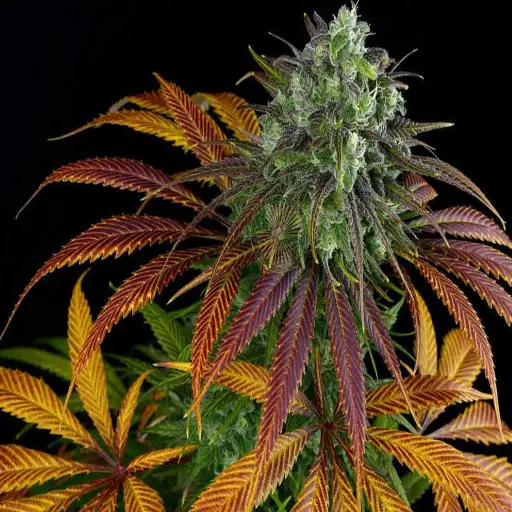
Soil Mixing Methods
The method of soil mixing for Epsom salt must be rather precise and balanced to improve nutrient availability and soil structure. Once the deficiencies for the crop concerning magnesium and sulfur are determined, the next step is the incorporation of the Epsom salts in the soil. In general, 1-2 tablespoons per square foot of soil may be used, spreading it out well so it does not localize in a specific spot, which may cause nutrient build-up therein. Then till the soil 6-8 inches deep, allowing roots the benefit of maximum absorption.
The importance of a thorough soil analysis cannot be overstated regarding its supply; too much magnesium is detrimental as it hinders the uptake of potassium and other nutrients. Magnesium works well in the soil, having a pH of around 6.0-7.0, since this range constitutes the zone of maximum cation exchange capacity. A good indication of its use would be Epsom salt, which possesses a fine grain for an even distribution and quick dissolution, so the nutrients are easily accessible to the soil.
In bigger production areas, irrigation with Epsom salt is recommended. Large fertigation systems use Epsom salts at the rate of 1 tablespoon per gallon of water to ensure uniform nutrient application over a wide range of plots. Any improper calibration of the delivery systems may cause salt crystallization or uneven application, along with which poor soils that bring down production for crop yield may work to the detriment of the system at large.
Foliar Spray Techniques
For foliar spray application, nutrients are sprayed directly onto the plant’s leaves, where they are absorbed very quickly for an immediate physiological response. In applying Epsom salt as a foliar spray, the often-recommended dilution rate of two tablespoons per gallon of water is typically used. This concentration allows for sufficient uptake of magnesium and sulfur while minimizing the possibility of leaf burn or salt accumulation on the foliage.
In foliar absorption, a number of environmental conditions may alter the relation of dissolution and absorption: temperature, relative humidity, and time of application. Hence, it is recommended to apply foliar spray either in the early morning or late afternoon when stomatal openings are active and evaporation rates are low. Studies demonstrated that magnesium uptake through foliar feeding can substantially affect chlorophyll production and thereby enhance photosynthesis, particularly in plants that are deficient in magnesium.
Application equipment deserves special attention so that complete coverage is achieved. Low-pressure sprayers fitted with fine nozzles create a mist that clings well to leaf surfaces without runoff. The use of surfactants in the application spray can improve adherence and maximize the availability of nutrients. Additionally, spray solutions must be tested for pH and found within the ideal range, as an imbalance can decrease nutrient solubility and absorption potential. After foliar application, it is essential to monitor the health of leaf tissue to confirm implementation success and allow for adjustment to concentration or spray interval.
Watering Solutions with Epsom Salt
Epsom salt (magnesium sulfate, MgSO4) is a renowned addition to agricultural and horticultural watering regimes due to its ability to supply magnesium and sulfur, both essential micronutrients for plant growth. Magnesium is key for chlorophyll synthesis and photosynthesis, so as protein synthesis and enzyme function. Once dissolved in water, the Epsom salt can be applied as a soil drench or foliar spray to deliver these nutrients in an easily absorbable form that improves plant vigor.
Magnesium-deficient crops generally display interveinal chlorosis and stunted growth, especially in heavy feeders such as tomatoes, peppers, and roses. Typically recommended concentration is between 1 and 2 tablespoons of Epsom salt per gallon of water in solution, depending on the plant type and growth stage. The applications mechanically ensure the soil is moist before, to allow easier heavy uptake and to avoid salt build-up in the root zone.
On the other hand, some field trials have demonstrated that Epsom salt application to watering programs can encourage fruiting and flowering by balancing nutrient availabilities, especially on sandy soils where magnesium quickly leaches. For sustainable use in precision agriculture, soil and tissue testing are recommended to tweak Epsom salt application to meet the nutrient requirements of the crops at hand.
Common Mistakes to Avoid When Using Epsom Salt

Overapplication Risks
Overapplication of Epsom salt evokes treatment in great magnitude for the soil and plants concerned. Whatever the general recommendation for magnesium sulfate treatment with regard to the use of Epsom salts in the root zone is, the treatment does not affect calcium and potassium uptake, whereas they play a leading role in being deficient in those elements. An imbalance can exert a negative force on plant growth, concerning reduced yield, quality of fruits, and general plant health. Long story short, the excess magnesium ions cannot be retained by plants, leading to runoff in areas, which would create eutrophication problems for adjacent water bodies while threatening aquatic life and biodiversity.
Clayey or poorly-drained soil types tend to build salts, especially when Epsom salt is overbashed. Salt buildup increases soils’ electrical conductivity (EC), and eventually, a situation not conducive for plant root function. EC levels could provide the stress of osmotic depending on how plants are subject to injuries, thus, they start to wilt and lose their capacity to withstand other environmental stresses such as heat or drought.
Managing Epsom salt application has to be done in a way that calibration takes place, specifically analyzing soil nutrients and crop requirements. Avoiding overapplication risks requires considering an integrated approach whereby Epsom salt is used in conjunction with other fertilizers that take into account soil texture, crop type, and environmental conditions. Application rates and nutrient inputs must be refined through regular soil and foliar tests to avoid undesired results. Sustainable use of magnesium sulfate shall meet informed decisions adhering to agronomic principles for long-term soil health and productivity.
Incorrect Timing Considerations
Delivering magnesium sulfate at the wrong moment may hamper its effectiveness and might, in worst-case scenarios, injure crops. If applied under excessive rainfall conditions, this nutrient could leach away before being absorbed by the plants, resulting in wastage of resources and environmental pollution. While on the flip side, should there be a dry period in lieu of irrigation after application, nutrient absorption may not take place as much as water is needed for the dissolution and transport of magnesium sulfate to the roots of the plants.
The growth stage of the crop is also very important in deciding the window of application. Early applications may result in inefficient utilization of nutrients when the plants still hardly require supplemental magnesium or sulfur. In contrast, late applications generally do not have any direct benefit because the efficiency of nutrient uptake during this time is reduced with the onset of maturity. Considerations, therefore, have to be made to fit the period of nutrient application into an important growth stage that impacts plant health and yield.
When magnesium sulfate is to be added to the fertilizer management system, I make sure that the application timing is in line with the specific environmental conditions and crop requirements. In addition to being hopeful that the shortcuts given with weather forecasts and growth-stage indicators will alleviate much of the associated risk of wrong application, I concentrate on sustainability and proper management that depends upon sound data and best agronomical practices to provide the maximum efficiency of resource use while helping the soil to retain its right characteristics.
Disrupting Nutrient Balance
Nutrient imbalance within agricultural systems stands out as the greatest threat to the long-term survival of soil fertility potential and crop production. Nutrient balance can be disturbed when an imbalance is occasioned through incorrect fertilization methods, over-reliance on chemical fertilizers, or monocropping, which depletes specific nutrients without replenishing them. While excess nitrogen application can cause nitrate leaching, the leached nitrates diminish soil efficiency and pollute water bodies. Likewise, the insufficient supply of some micronutrients, such as zinc and boron, induces deficiency symptoms that harm crop development and yield quality. Thus, the adoption of precision agriculture tools for tailored applications of nutrients based on individual soil and crop requirements becomes very critical.
Furthermore, environmental conditions challenge the risk of nutrient imbalance. So now, during heavy rainfall events, nutrients wash off faster, and by the loss of nutrients,the soil becomes poor before the nutrients can even be absorbed by the plants. On the flip side, in drought conditions, nutrient uptake can get battered because of less soil moisture and hence less bioavailability of the prime minerals. To put icing on the cake, salinization through irrigation alters the chemical nature of soil, displacing the needed ions in the holding capacity for crops. These compounded issues further reiterate the need to integrate site-specific interventions supported by extensive ongoing measurement and soil testing.
The resolution of this challenge, therefore, lies in the promotion of evidence-based practices and the embracing of new-age agricultural technologies. Remote sensing technology, together with geospatial data, can accurately delineate nutrient deficiencies across the field for optimizing fertilizer input to meet crop requirements precisely. These measures, when combined with organic amendments to the soil (compost, green manures), enhance microbial health and encourage nutrient cycling in the soil. Crop rotation and intercropping are again employed in a balanced way in the utilization of soil resources, conserving depletion rates and enhancing biodiversity. These methods address not only the existing discrepancy in nutrient balance but also serve as a stepping stone to a sustainable use of resources within agricultural ecosystems.
Guidance for Growers of All Experience Levels
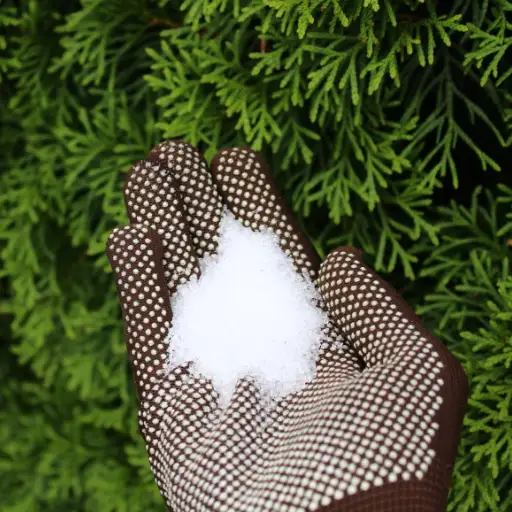
Advanced Techniques for Experienced Growers
The field of precision agriculture is a modern way for experienced growers to operate at maximum efficiency while still maintaining sustainability. It is a very thin line where science and technology meet to solve agricultural problems, and classical precision agriculture is largely based on technologies like GPS mapping, satellite imagery, and Internet-enabled sensors to observe land, soil, water, and crop yield distribution over time. Using GIS, a farmer or grower can pinpoint nutrient deficiencies or pest infestations, allowing for precise interventions to minimize waste and optimize inputs.
Furthermore, integrating Variable Rate Technology (VRT) in farmer operations delivers a precise dosage of fertilizers, herbicides, or watering. This minimizes environmental pollution while ensuring that the few resources used are really needed. Developments in machine learning methodologies allow for better predictive modeling of crop performance, making it feasible to attain a reasonable level of accuracy in forecasting crop yield outcomes given data of historical patterns and real-time environmental state.
These advanced approaches increase productivity while also maintaining sustainability by ensuring the overuse of resources is reduced, thus greenhouse gas emissions are kept to a minimum, and the integrity of the oil is not lost. These technologies, being capital-heavy, eventually bring forth good economic worth in the long term, making them an ideal choice for any grower fighting for a future-ready agricultural practice.
Ensuring Successful Use of Epsom Salt in Cultivation
Epsom salt, or magnesium sulfate (MgSO₄·7H₂O), is a well-known agricultural amendment that alleviates magnesium and sulfur deficiencies in soil or plants. It can help chlorophyll production; photosynthesis is thereby improved, and yield quality is improved. However, precise application is a must if success is desired and damaging effects on soil and plants are to be avoided.
First, soil tests must be conducted before its use to determine the existing magnesium and sulfur levels. Otherwise, overapplication may cause imbalances in nutrients that adversely affect crop growth. There are two major ways to apply Epsom salt—in the soil or as a foliar spray. For soil application, it is best to apply the compound evenly and then incorporate it well to avoid the formation of “hot spots” with high concentrations of the product. Foliar application, in contrast, consists of dissolving Epsom salt in water (usually at a concentration of 2%) and spraying the leaves with it. This enables fast nutrient uptake, especially at key stages of development, such as when the plants are fruiting or flowering.
Also, Epsom salt should be integrated into an overall nutrient management program. The combination of its use and real-time monitoring technologies, such as portable nutrient analyzers, will ensure balance and avoid oversaturation. Moreover, in highly clayey soils or in alkaline conditions, magnesium-ion mobility may be curtailed; hence, alternative measures such as those depending on chelated magnesium formulations will be required.
Finally, economic feasibility should be assessed by considering dosage requirements and relating them to the expected value of target crops and the implied improvement in yield. Applied in conjunction with demonstrably monitored courses of action coupled with precision farming, Epsom salt can provide producers with very definite improvements that one would expect modern sustainable agriculture to endorse.
References
Frequently Asked Questions (FAQ)
Q: What is the benefit of using Epsom salt for weed plants?
A: Epsom salt is beneficial for weed plants as it contains magnesium and sulfur, essential nutrients that help in chlorophyll production and improve overall plant health. Healthy cannabis plants can better absorb nutrients, leading to enhanced growth and yields.
Q: How much Epsom salt should I apply to my cannabis plants?
A: The amount of Epsom salt can vary based on the needs of your cannabis plants. A common recommendation is to mix one tablespoon of Epsom salt per gallon of water when watering your plants. This ensures adequate magnesium and sulfur for optimal growth.
Q: Can Epsom salt help with magnesium deficiency in cannabis plants?
A: Yes, Epsom salt can help alleviate magnesium deficiency in cannabis plants. Symptoms of deficiency include yellowing leaves and slow growth. Applying Epsom salt provides the necessary magnesium that plants need for healthy development.
Q: How do I apply Epsom salt to the soil?
A: You can apply Epsom salt to the soil by mixing it with water and using it during your regular watering schedule. Alternatively, you can sprinkle dry Epsom salt around the base of the plants and then water them to help with absorption.
Q: Is it better to foliar spray Epsom salt or apply it to the soil?
A: Both methods have their advantages. Using a foliar spray allows for quicker absorption of magnesium directly through the leaves, while applying Epsom salt to the soil promotes long-term nutrient uptake through the root system. Choose based on your plants’ immediate needs.
Q: How often should I use Epsom salt on my weed plants?
A: It’s generally recommended to apply Epsom salt every four to six weeks, especially during the flowering stage when cannabis plants need magnesium the most. Adjust the frequency based on your soil test results and the health of your plants.
Q: Can I mix Epsom salt with other nutrients?
A: Yes, Epsom salt can be mixed with other nutrient solutions, but it’s essential to ensure that the overall nutrient balance remains appropriate for your cannabis plants. Always check compatibility and avoid over-fertilizing.
Q: What are the signs that my plants are lacking the nutrients they need?
A: Signs of nutrient deficiencies in cannabis plants include yellowing leaves, stunted growth, and poor flowering. If you notice these symptoms, consider testing your soil and supplementing with Epsom salt to address magnesium and sulfur deficiencies.
Q: Can Epsom salt be used in hydroponic systems?
A: Yes, Epsom salt can be used in hydroponic systems as a source of magnesium sulfate. It’s essential to monitor the nutrient solution’s pH and concentration to ensure that your cannabis plants receive the right balance of nutrients.


